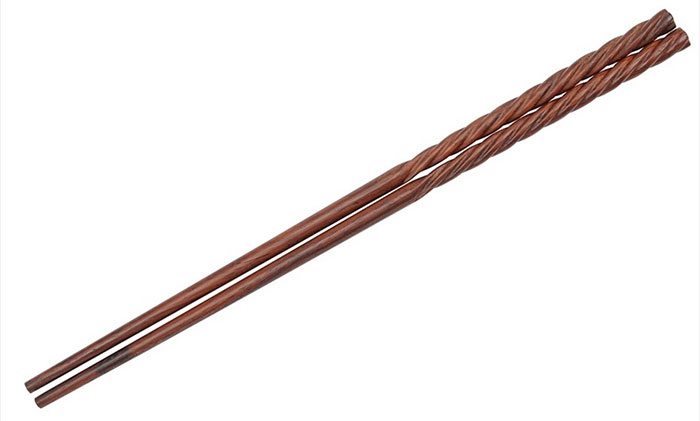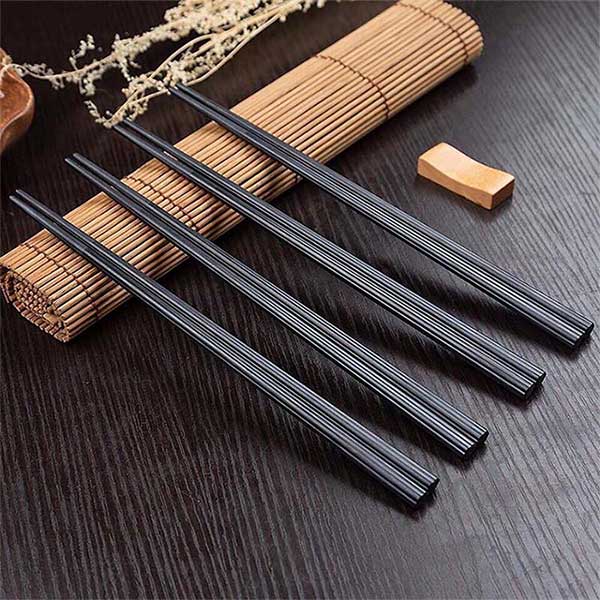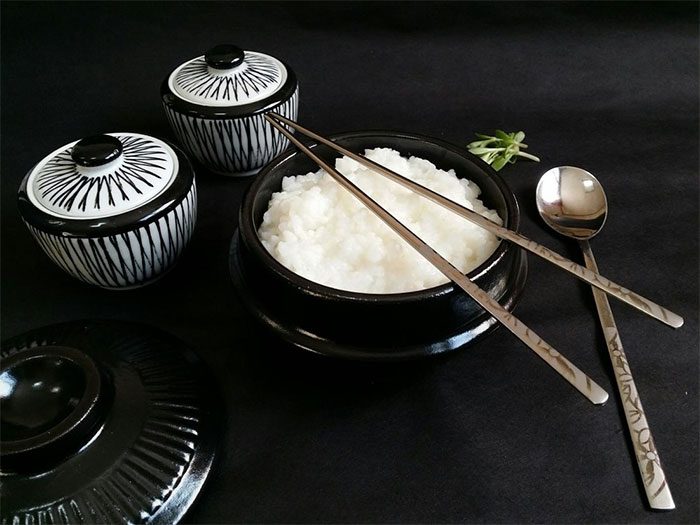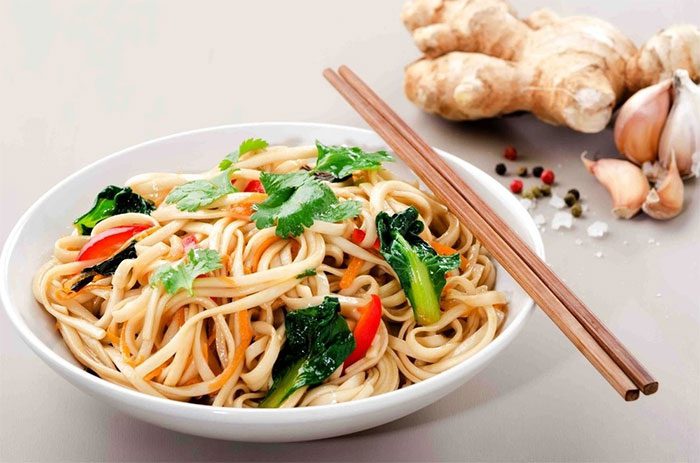Chopsticks are not only eating utensils but also carry the cultural significance of each country. Let’s explore the intriguing differences between Chinese, Japanese, Korean, and Vietnamese chopsticks.
Chopsticks are a familiar symbol in East Asian cuisine, used in daily meals for thousands of years. However, not everyone knows that the chopsticks in each country differ in shape, material, and usage.
1. Chinese Chopsticks: Long and Heavy

This type of chopstick is often made from materials such as bamboo, wood, plastic, or even metal.
Chinese chopsticks typically have the longest length among East Asian chopsticks, measuring about 25-30 cm. These chopsticks are usually made from materials like bamboo, wood, plastic, or even metal. A distinctive feature of Chinese chopsticks is their long and straight body, with thicker tips that are less pointed compared to those from other countries.
The increased length allows Chinese users to easily pick food from large shared dishes placed in the center of the dining table. In Chinese cuisine, dishes are often served family-style for everyone to share, and longer chopsticks make it more convenient to grab food from a distance.
2. Japanese Chopsticks: Short and Elegant

Japanese chopsticks are characterized by their pointed tips.
Japanese chopsticks tend to be shorter than Chinese chopsticks, typically measuring around 20-23 cm. A prominent feature of Japanese chopsticks is their pointed tips, which make it easier for users to pick up delicate foods, especially fish or sushi. Additionally, Japanese chopsticks often feature intricate decorative patterns that reflect the elegance and meticulousness of Japanese culture.
Another unique aspect is that the Japanese have specific chopsticks for different purposes, such as chopsticks for eating fish, children’s chopsticks, and chopsticks used in traditional ceremonies. The materials for Japanese chopsticks also vary widely, from wood and bamboo to high-quality lacquered finishes.
3. Korean Chopsticks: Metal and Flat-Tipped

Korean chopsticks have a slightly flat shape at the tips. (Image: SinhvienVietNam).
Korean chopsticks have a very distinctive feature compared to those in other countries: they are often made of metal rather than wood or bamboo. Korean chopsticks are usually short, around 20-23 cm, and have a slightly flat shape at the tips, making them easier to grip.
The use of metal chopsticks originated from the eating habits of Korean royalty in the past. Kings used silver chopsticks to detect poison in food. Although silver chopsticks are no longer common today, metal chopsticks have become a tradition in Korean culture.
Moreover, because metal chopsticks can be more slippery than wooden or bamboo ones, the tips are often designed flat to provide a more secure grip, especially when picking up heavier or oilier dishes.
4. Vietnamese Chopsticks: Versatile and Flexible

Vietnamese chopsticks are often made from bamboo, wood, or plastic, offering flexibility and versatility. (Image: SinhvienVietNam).
Vietnamese chopsticks typically measure about 25 cm, longer than Japanese and Korean chopsticks but slightly shorter than Chinese ones. Vietnamese chopsticks feature a simple design with slightly smaller, round tips that make it easy to pick up food. They are commonly made from bamboo, wood, or plastic, providing versatility in use for various dishes.
The Vietnamese habitually use chopsticks for both cooking and eating. Longer chopsticks can be used for stirring pots and picking food while cooking, whereas shorter ones are used during everyday meals.
Cultural Significance of Chopsticks
Besides the differences in shape and material, chopsticks also carry profound cultural meanings in each country.
- In China, chopsticks symbolize luck and family bonding.
- In Japan, chopsticks are seen as a symbol of elegance and respect in dining culture.
- In Korea, the use of metal chopsticks conveys a sense of royalty and sophistication.
- In Vietnam, chopsticks represent connection and unity during family meals.
Despite the differences in shape, material, and usage, chopsticks remain a common symbol of East Asian cuisine and culture. Understanding these variations helps us appreciate the cultural values and traditions of each country.


















































